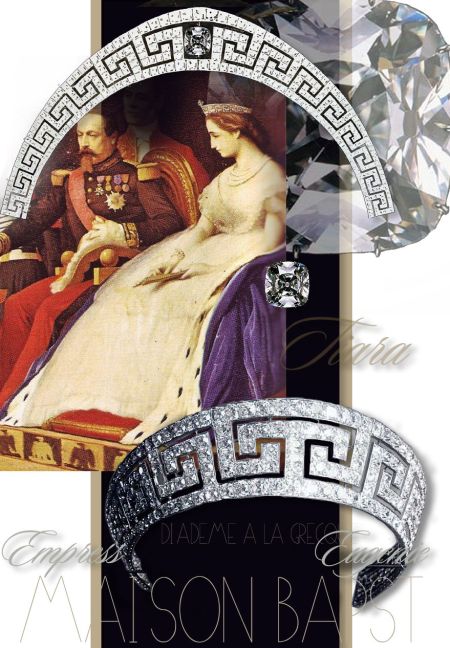
Pearls Tiara Diadem Bandeau Pearlstrings Empress Josephine
|Empress Josephine Jewels |French historic Jewelry
Frankreich France history Royal Jewellery & Aristocratic Jewels antique jewellery historian Orleans Bourbon Napoleon Bonaparte princejean comte de paris comtesse deparis royaltéfrançaise dauphinedefrance maison royale de france frenchroyalty frenchroyalfamily royalbride royalmarriage royal royals royalty
maisondefrance familleroyale comtedeparis countessofparis orleans crownjewels frenchcrownjewels
Joyaux de la couronne de France French Crown jewels, Empress Eugenie, imperatrice,
aubert, joaillier de la Reine Marie-Antoinette

Infanta Maria Francisca of Portugal, Duchess of Coimbra, wore an historic emerald brooch in her hair for the dinner following her wedding to Duarte de Sousa Araújo Martins at her parent’s home in Sintra, Portugal on 7 October 2023.
The important emerald and diamond brooch belonged to her grandmother, Princess Maria Francisca of Orleans-Braganza, above in the picture. It was a wedding gift in October 1942 when she married in PETRÓPOLIS – BRASILIA, from her family.
The Emerald brooch was now, without the two pear shaped pendants.

Infanta Maria Francisca, the Duchess of Coimbra, also wore a pair of emerald and diamond earrings for the reception that belonged to her Princess Maria Francisca of Orleans.
The diamond from her engagement ring was taken from these earrings and the groom replaced it and one on the other earring with emeralds, see the details in the story before.
the first posting of this jewels is from the year 2007…the ruby and diamond brooch, wearable as wreath diadem….


Saint Michael’s Krone von Mont Saint Michel,

wurde von Mellerio-Meller in der Rue de la Paix in Paris angefertigt, die große Spezialisten für religiöse Gegenstände war und einst am Quai Voltaire in Paris seine Werkstatt hatte.
Es ist die Krone des Heiligen Michel, die sich in Mont Saint Michel befindet.
Diese Krone ist aus vergoldendem Messing. Auf dieser Krone befinden sich Topase, Diamanten, Amethyste, Rubine und Aquamarine.
Diese Krone hat die Form eines Helmvisiers, geschmückt mit zehn silbernen Muscheln über einem Band, das zwischen zwei Spitzen das „Quis ut Deus“ trägt. Das Gehäuse und die Spitzen bestehen aus versilbertem Messing.
Es trägt das lateinische Motto des Heiligen Michael: Benedicte dominum omnes angeli ejus potentes virtute. : Princeps angelorum.
Mellerio orfèvre Paris 1878.
Diese erste Krone aus Gold, Vermeil und Edelsteinen wurde 1877 von Pater Robert des Prémontrés bei Mellerio dits Meller bestellt.
Laut der historischen Akte handelt es sich um das Faksimile der Krone des Heiligen Michael, das auf der Weltausstellung 1878 gezeigt und im Jahr 1906er gestohlen worden war.
Allein die abgenommene Krone, ein wahres Kunstwerk Mellerios , stellte einen materiellen Wert von mindestens einer halben Million dar.
Imperial historical jewellery

Update the website from the year 2006/2020
—


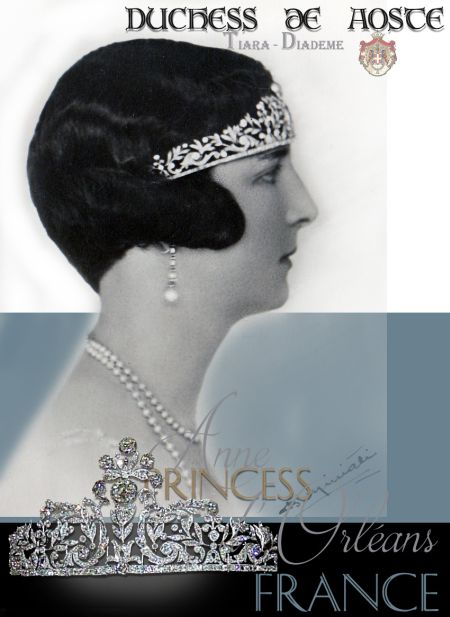
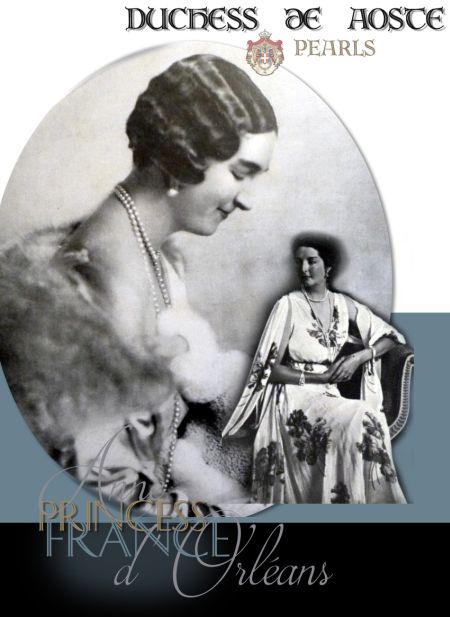
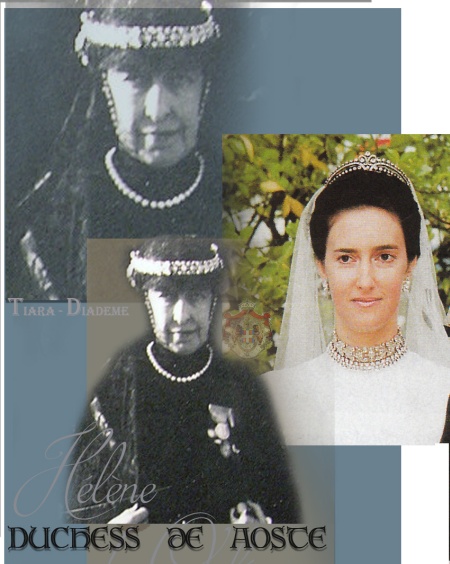
see on top the diamond bandeau worn by the bride Princess Anna of Orleans | Duchess of Aosta – again as choker on her neck from the bride in later days
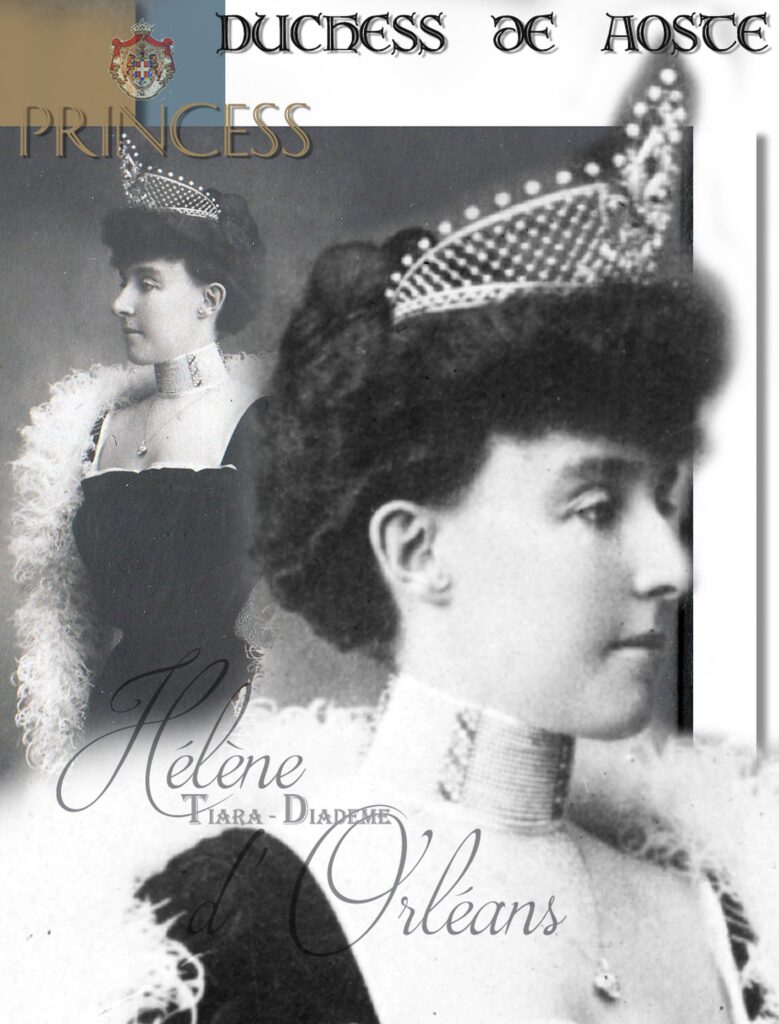

The Savoy Aosta tiara | Wedding Tiara and Diadem of Countess Margherita von und zu Arco Zinneberg

AOSTE SAVOY TIARAS – Duchess Helene of Aoste Diamond Choker Bandeau Tiara| Wedding Countess Olympia of Arco-Zinneberg Princess Napoleon
Pos 33 vent de Diamants de la couronne:
Diadem a la grecque -326 brillants, pes 306 19/32ct
……………………………..-286 petits brillants, pes 5ct –
……………………………..- 612 Brillants tt 411ct value: 150 000,–
The Greek Diadem This diadem in a Greek design was made as a setting for the Regent Diamond.
